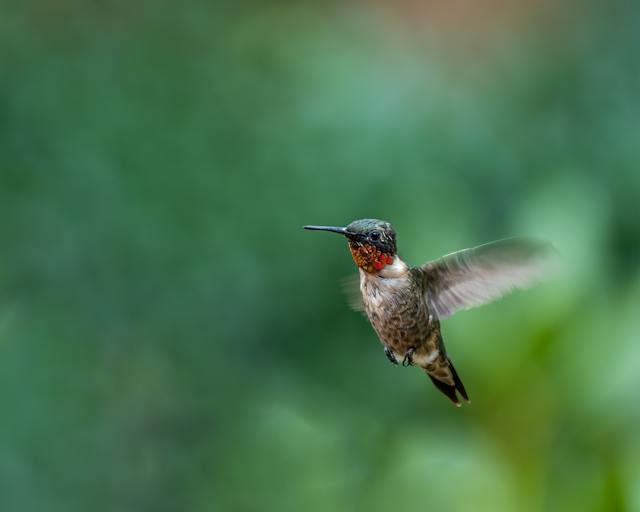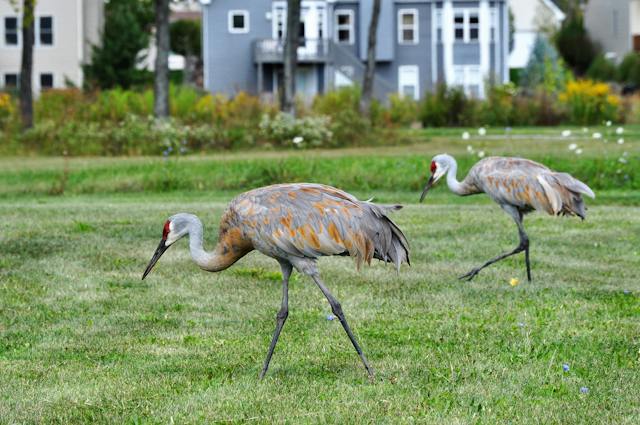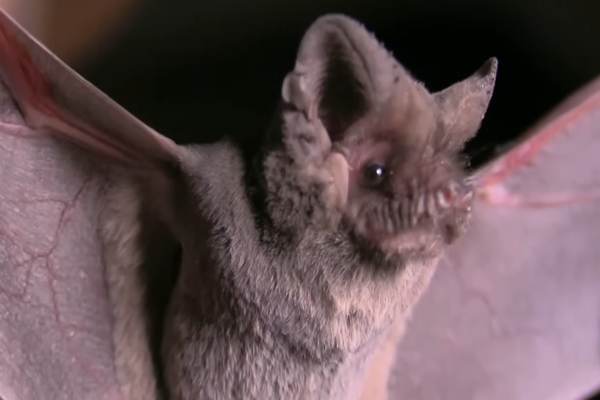
Happy New Year from all of us at The Bug Dude! We hope that your holidays were joyous, and your new year is starting out wonderfully!
The confetti has settled, the fireworks have all gone off, the champagne has been consumed, and 2024 has begun. If you’re like a lot of people, one of the first things you did after all the celebrations had concluded was to let out a sigh of relief that all the stress of the holiday travels was over for another 11 months. But for many animals, the biggest travel times of the year are just approaching. And while fireworks in the sky are an enchanting sight, nothing can compare with the majesty nature has to offer when animals take to the skies in mass migrations.
Whether the migration is centered around food and water, finding a mate, or giving birth, there are some amazing animals performing astounding feats every year in North America. So to ring in the new year, instead of talking about the issues you can encounter when insects and wildlife invade your home, we’re going to look at some of the grandeur Mother Earth has to offer.

3,000 Miles
One of the most majestic and breathtaking animal migrations in North America is performed by something with only a 4-inch wingspan: the monarch butterfly. These beautiful insects will fly a distance of 3,000 miles during their migration from Canada to Mexico (though some will overwinter in the U.S. in Florida or California). Even more amazing than the fact that these insects can make such a long journey is how they do it. The journey south is completed by a single long-lived generation of monarch butterflies, but the journey north is completed by multiple (3 to 5) generations of the butterfly!
If you ever get the chance to visit a spot along the migratory path of these butterflies, you won’t regret taking the time to admire these beautiful creatures in flight or simply resting in droves on trees. I’ve had the chance to experience it firsthand and it is every bit as magical and fascinating as it sounds.

7 Grams
Weighing in at only 7 grams, another 3,000-mile North American migratory animal to marvel over is the ruby-throated hummingbird. These tiny birds, only 3.5 inches tall, not only traverse the distance between Canada and Central America, but they are capable of flying completely across the Gulf of Mexico, a 500-mile trip that they have to make in one 18-22 hour nonstop flight! On shore, these little birds cover an average of 20 miles per day on their trek; that’s better than most human thru-hikers can manage!

29,000 Feet
Perhaps the most easily recognizable migration in North America is that of the Canada goose. Unlike the smaller animals on this list, it’s difficult not to notice the sky filled with v-shaped formations of birds measuring 2-3.5 feet long and with a wingspan of 4-6 feet. But in case you weren’t looking up at the time, their distinctive honking will quickly alert you to their presence. And while you marvel at them flying overhead, consider that they have been known to reach an altitude of 29,000 feet (about the height of Mount Everest) during their journeys and can cover 1,500 miles in a single day!

500,000 Birds
If you’re looking to set eyes on hundreds of thousands of birds preparing for their long migratory journey, look no further than the sandhill crane. These graceful, long-legged birds stand around 4 feet tall and spend most of their lives in freshwater wetlands. Every year they make the trek from Texas, California, or Florida all the way up to their breeding grounds in Canada, Alaska, and Siberia. What’s particularly unique about their migration is that between March and April around 80% of these cranes (over 500,000 birds) settle in a 75-mile stretch along the Platte River in Nebraska in order to fatten up and gain the reserves they need for their journey. During their journey, they can fly up to 400 miles in a single day.

60 MPH
When you think of the great migrations of the world, you probably first think of a variety of birds, then maybe animals like wildebeest, eventually you would get to ocean-dwellers and insects, but would you ever think of the migration of bats? While not all bats migrate or migrate any significant distance, the Mexican free-tailed bat completes an annual migration from Texas to Mexico. While not traveling the longest distance, these bats not only can fly up to 60 mph, but they also come in droves. Every year at least 100 million female bats make the trip up to Texas to give birth!

45 Years
While all of the migrations discussed above are spectacular to witness, there is also an intrinsic beauty to be found in staying in one place, and we here at The Bug Dude are happy to have called the Mid-Cities area our home since 1979. That’s right, we are celebrating our 45th anniversary this year! So to help us celebrate, let’s look at a few highlights from the year Mid-Cities Pest Control began.
Oscar Winners: Jon Voight, Christopher Walken, Jane Fonda, and Maggie Smith
Best Movie Oscar Winner: The Deer Hunter
Top Grossing Movie:Superman
Also in the Top 5: The Amityville Horror, Rocky II, Star Trek: The Motion Picture, and Alien
Top-rated U.S. TV shows: 60 Minutes, Three’s Company
Also in the Top 10: M*A*S*H, Dallas, The Jeffersons, and The Dukes of Hazzard
Best Musical Tony Winner: Sweeney Todd
#1 on the Billboard Hot 100: “My Sharona” by The Knack.
Also in the Top 10: “I Will Survive” by Gloria Gaynor & “Y.M.C.A.” by Village People
Sports: the Pittsburgh Steelers won Super Bowl XIII, the Seattle Supersonics won the NBA finals, the Montreal Canadiens won the Stanley Cup, and the Pittsburgh Pirates won the World Series
Noteworthy: the 1979 NCAA Championship still has the highest Nielsen rating for any U.S. basketball game (college or pro); the game was between Michigan State (with Magic Johnson) and Indiana State (with Larry Bird).
Historic Events: the Three Mile Island accident occurred, the Iranian hostage crisis began, and NASA’s Skylab fell to Earth
Technology: the Sony Walkman and the Black and Decker Dustbuster were introduced
Minimum Wage: $2.90 per hour
Price of Gas: $0.86 per gallon
Most Popular Car: Oldsmobile Cutlass
Average House Price: $62,900
DFW Population: 2,416,000
So as we look back at the 4.5 decades behind us and look forward to this bright and shiny new year, we would like to thank everyone who has contributed to the success of The Bug Dude and wish all of our clients (and future clients) a healthy, wealthy, and wise New Year!
Further Reading:
“Top 5 North American migratory animals” – US Harbors
“Nature’s Most Impressive Animal Migrations” – National Geographic Society
“6 Incredible Animal Migrations in the U.S.” – Jim Stewart, The Discoverer
“Follow the herd” – Andrea Sachs, The Washington Post
“Eye on Nature” – Kelly Bender, Mike Quinn, Meg Goodman, Lee Ann Linam, Linda Campbell, Craig Farquhar, Brent Ortego, Mark Klym, Marsha Reimer, Heather Lanman, and John Herron, Texas Parks & Wildlife, Wildlife Diversity Branch
“Sandhill Crane” – The Nature Conservancy
Author Bio: Alissa Breach has been gaining knowledge and experience around pest control concerns over the last 14 years while working for Mid-Cities Pest Control. She has a creative writing BA from UW-Madison and is always pursuing new and interesting writing projects.




